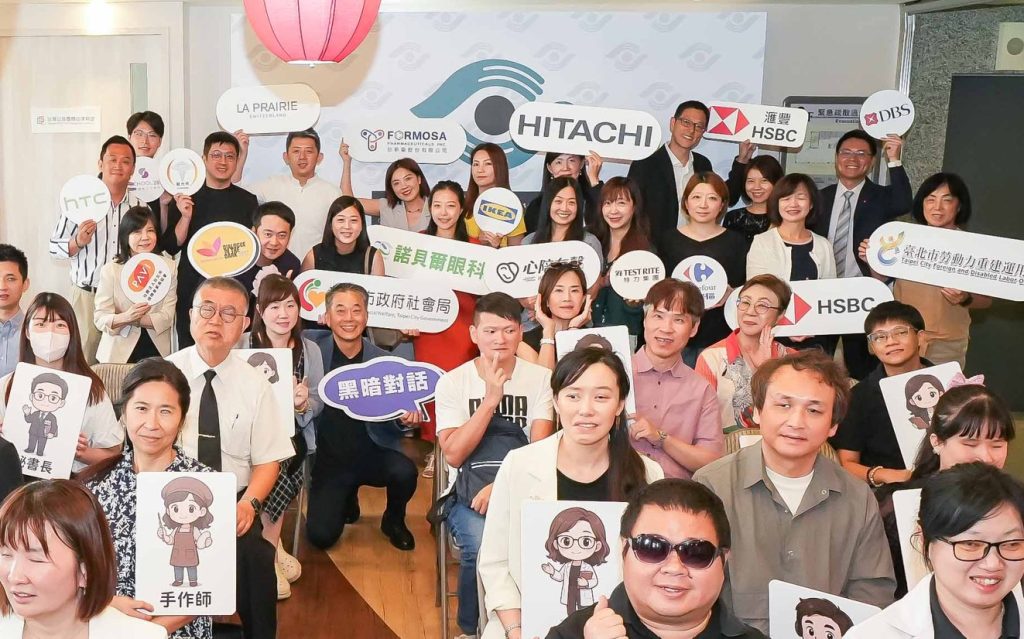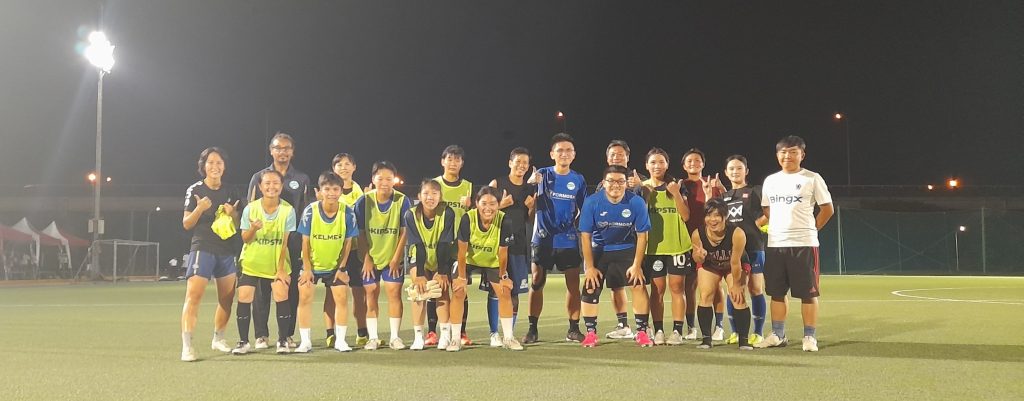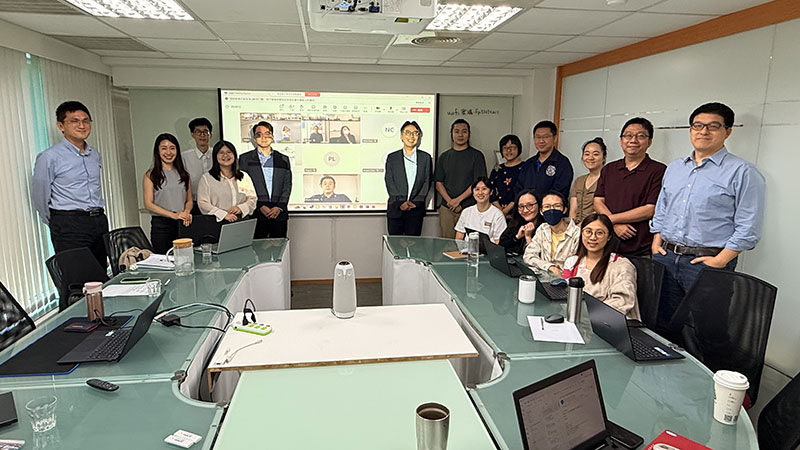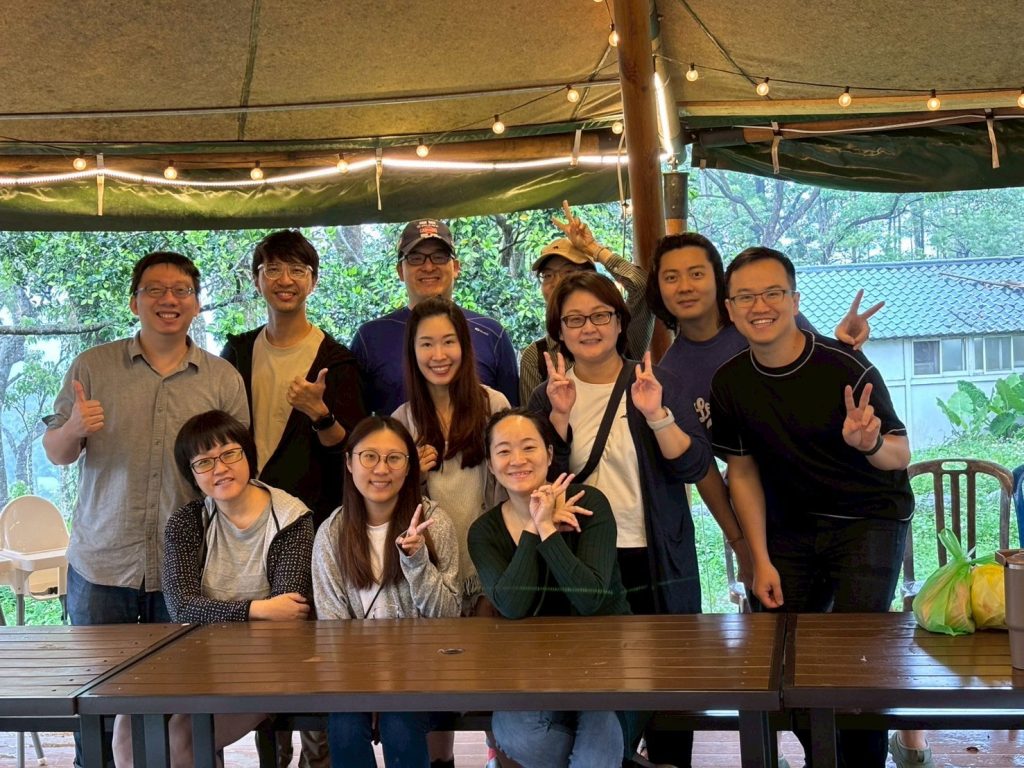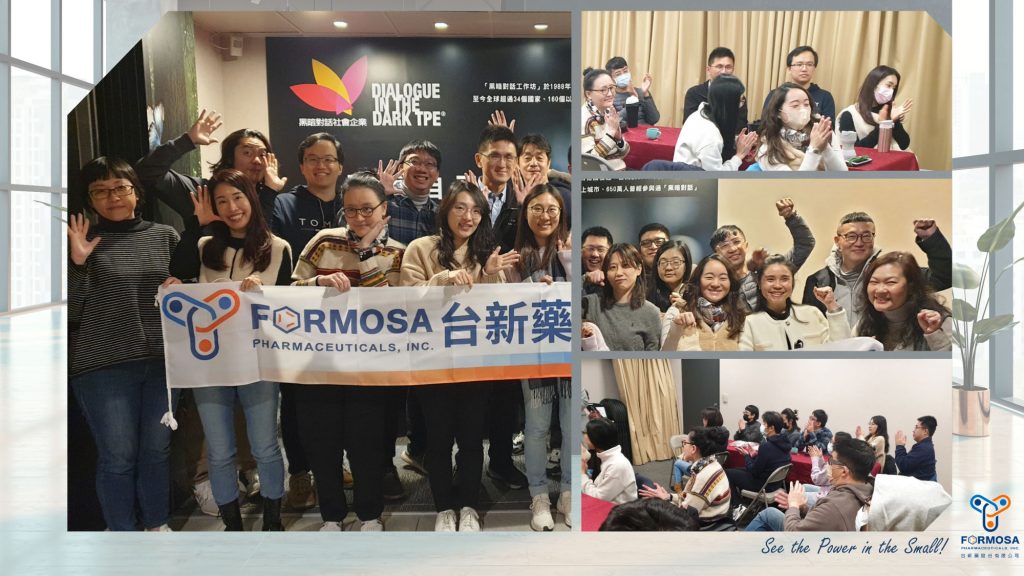Society
Employee Recruitment, Development, and Retention
| Description of Importance | Impact Assessment | Value Chain Impact | Corresponding Section of Management Approach | ||
|---|---|---|---|---|---|
| Upsteam | Midsteam | Downsteam | |||
| Employees are a key asset of Formosa Pharmaceuticals. Establishing appropriate recruitment and retention systems is a critical topic for the Company's future sustainable development | Talent is the key to corporate success. If a company is unable to attract, develop, and retain high-quality employees, it will face issues such as inefficiency and lack of innovation. In addition, high turnover rates increase recruitment and training costs. | ● | 4.1 Employee Recruitment, Development, and Retention | ||
| Corresponding GRI Disclosure | GRI2-7 GRI2-8 | Linked SDGs |

|
1. Employee Profile Statistics
As of the end of 2024, the total number of employees at Formosa Pharmaceuticals was 19, representing an increase of 3 employees compared with the previous year. Gender distribution: 9 male employees (47.37%) and 10 female employees (52.63%).
2. Recruitment
- To expand the Company’s talent recruitment channels and encourage internal employees to recommend outstanding candidates, thereby fulfilling recruitment needs and enhancing team cohesion, the Company has established an incentive program. Under this program, if a referred candidate passes the interview, is successfully hired, and remains employed for six months, the referrer will receive a referral bonus.
- The Company has established recruitment-related regulations to promote diversity, equity, and inclusion (DEI) and sustainability. In the processes of recruitment, examination, hiring, assignment, placement, performance evaluation, or promotion, no job applicant or employee shall be discriminated against or treated differently on the basis of race, class, language, ideology, religion, political affiliation, nationality, place of birth, gender, sexual orientation, age, marital status, appearance, physical features, disability, zodiac sign, blood type, or current/former union membership.
3. Employee Benefits
- Allowances for marriage, bereavement, and other special occasions
- Holiday gift allowances
- Subsidy for annual year-end banquet
- Service recognition awards
- Birthday celebration subsidies
- At least one subsidized team-building activity per year
- Employee health check-up subsidy
- Additional paid leave (e.g., birthday leave)
- Access to the Group’s Employee Assistance Program (EAP)
To align with sustainable development and ESG trends, external consultants were engaged in 2024 to conduct knowledge sharing and training on greenhouse gas inventories and international ESG trends. This empowers employees to become internal sustainability ambassadors and prepares for subsequent greenhouse gas inventories, IFRS S1 S2, and further sustainability compliance.
4. Promotion of Worker Health
The Company attaches great importance to the physical and mental health of employees. In addition to providing subsidies for annual health check-ups (with general employees receiving an annual subsidy for a designated amount, and managers undergoing comprehensive health examinations at designated medical institutions once every two years), special health examinations are regularly conducted for employees working in laboratories and for those engaged in operations with exposure to dust, solvents, high-sensitivity agents, or specific hazardous chemicals. To ensure employees make effective use of annual leave for rest and relaxation, the Company encourages the use of annual leave and has extended the validity period by six months, for a total of one and a half years. Furthermore, employees may participate in the Group’s Employee Assistance Program (EAP). Through dedicated care platforms or toll-free hotlines, employees can access psychological counseling, legal consultation, tax and financial advisory services, management consulting, and health consultation. All services are protected by strict privacy and confidentiality policies. In addition to employee-initiated consultation, the EAP also provides monthly articles to promote awareness and support employees’ physical and mental well-being.
5. Fire Safety and Emergency Preparedness
The Company has established Occupational Safety and Health Guidelines to implement and maintain a sound safety and health management system, ensuring effective operations and continuous improvement in line with its safety and health policy objectives. In addition to regular fire safety inspections conducted at the Taipei office, fire safety inspections and emergency evacuation drills are also periodically carried out at the leased Taoyuan office and laboratory facilities.
6. Prevention of Workplace Misconduct
The Company strictly prohibits workplace sexual harassment and, in accordance with law, has established complaint channels for gender equality. Employees may file complaints by completing a Gender Equality Complaint Form or by contacting designated personnel through a dedicated hotline. Complaints may also be submitted through the EAP platform. In addition, employees can access the Group’s online training platform to enhance their understanding of workplace misconduct issues, thereby strengthening prevention and raising awareness across the organization.
Human Rights
| Description of Importance | Impact Assessment | Value Chain Impact | Corresponding Section of Management Approach | ||
|---|---|---|---|---|---|
| Upsteam | Midsteam | Downsteam | |||
| The GRI 2021 Universal Standards specifically include "Human Rights" as a material topic that companies should disclose. | If a company fails to respect human rights in the context of global operations, it may face social pressure, consumer boycotts, and legal liability. Protecting the fundamental human rights of employees, suppliers, and consumers is a cornerstone of corporate sustainability. | ● | ● | ● | 4.3 Human Rights Topics |
| Corresponding GRI Disclosure | GRI2-23 | Linked SDGs |

|
Policy or Commitment
- Policy: The Company follows its Supplier Management Policy and requires supplier assessments prior to engagement. The Company declares its support for and compliance with international labor and human rights norms and globally recognized standards, including the United Nations Universal Declaration of Human Rights, the United Nations Global Compact, the United Nations Guiding Principles on Business and Human Rights, the International Labour Organization Declaration on Fundamental Principles and Rights at Work, the OECD Guidelines for Multinational Enterprises, and the Responsible Business Alliance (RBA) Code of Conduct.
- Commitment: In recruitment, selection, employment, assignment, placement, appraisal, or promotion of job applicants or employees, no discrimination shall be made on the basis of race, social class, language, ideology, religion, political affiliation, place of origin, birthplace, gender, sexual orientation, age, marital status, appearance, physical features, disability, horoscope, blood type, or past/current labor union membership.
Indicators and Targets
- Short-term: Integrate diversity and inclusion into recruitment policies.
- Mid-term: Incorporate human rights issues into the Supplier Management Guidelines to promote awareness of human rights due diligence among employees and suppliers.
- Long-term: Conduct supplier human rights due diligence assessments based on the RBA framework.
Tracking and Management Mechanism
In compliance with relevant company regulations, the Company commits to respecting user privacy, personal freedom and security, working conditions, occupational health, freedom of expression and association, prohibition of child labor, non-discrimination and anti-harassment, prevention of forced labor, and the right to family life.
Annual Actions and Results
The Company has extended its corporate social responsibility principles across its supply chain to ensure compliance with environmental protection, occupational health and safety, and labor and human rights standards. Joint efforts have been made to safeguard the environment, enhance employee safety and health, and promote labor rights in the workplace. In addition, the Company selects reputable international pharmaceutical partners for product licensing and distribution, thereby strengthening corporate social responsibility through collective impact.
Counterfeit Medicines
| Description of Importance | Impact Assessment | Value Chain Impact | Corresponding Section of Management Approach | ||
|---|---|---|---|---|---|
| Upsteam | Midsteam | Downsteam | |||
| Counterfeit medicines include those fully manufactured by counterfeiters as well as genuine medicines whose expiry dates have been altered to extend shelf life. As a member of the biotechnology and pharmaceutical industry, it is imperative to ensure that medicines are effective and free from false or misleading claims. | Counterfeit medicines pose a serious impact on the pharmaceutical industry, not only endangering consumer health but also potentially causing reputational damage and legal litigation for companies. | ● | ● | 4.4 偽造藥物 | |
| Corresponding GRI Disclosure | SASB | Linked SDGs |

|
When any potential or known counterfeit medicine risk is identified, the Company immediately informs its international partners through designated contact representatives via email. The Company coordinates with relevant stakeholders to launch investigations, conduct subsequent risk assessments, and establish immediate corrective actions as well as preventive measures to avoid counterfeit medicines infiltrating the supply chain. As of the reporting date, no such incidents have occurred.
Policy or Commitment
The Company implements the “Customer Management and Credit Operation Procedures” to ensure downstream customer qualification recognition, confirming that customers comply with legal requirements, hold pharmaceutical distribution licenses, and supply medicines legally for patient use, thereby safeguarding the quality of pharmaceuticals available to the public.
Indicators and Targets
- Short-term: Implement drug serialization procedures and execute downstream customer qualification recognition.
- Mid-term: Ensure that contract manufacturers establish robust pharmaceutical labeling procedures.
- Long-term: Develop and implement supply chain management strategies to ensure suppliers provide products of high quality.
Tracking and Management Mechanism
- To prevent counterfeit drug risks, the Company has implemented serialization procedures for pharmaceutical products shipped to the U.S. Each primary and secondary package includes a unique product identifier, including National Drug Code (NDC), serial number, batch number, and expiration date. Shipment records and serialization data are properly maintained for batch traceability to prevent counterfeit infiltration into the pharmaceutical supply chain.
- The Company conducts internal audits annually to ensure the quality and compliance of internal operations. A supplier qualification certification system is established, with regular quality audits conducted for suppliers, contract manufacturers, and commissioned laboratories to ensure the quality of raw materials, products, and services.
- Annual evaluations are conducted on suppliers and contract manufacturers’ services, with follow-ups on improvement plans where necessary.
Annual Actions and Results
The Company is a qualified pharmaceutical distributor, compliant with Good Distribution Practice (GDP) requirements, and has obtained GDP wholesale distribution authorization. The “Counterfeit and Prohibited Drugs Management Procedures” were established to ensure compliance:
- PM and QA shall ensure the legality of the pharmaceutical supply chain, confirm outsourcing manufacturers’ management capability, certify and regularly evaluate contractors to prevent counterfeit or prohibited drugs from entering the legitimate supply chain, and report to competent authorities where necessary.
- Contract manufacturers or customers discovering suspected counterfeit or prohibited drugs infiltrating the Company’s legitimate supply chain shall notify Formosa Pharmaceuticals immediately.
Access to Medicines
| Description of Importance | Impact Assessment | Value Chain Impact | Corresponding Section of Management Approach | ||
|---|---|---|---|---|---|
| Upsteam | Midsteam | Downsteam | |||
| companies are expected to take action to ensure that patients can obtain the medicines they need in a reasonable, affordable, appropriate, and accessible manner, thereby strengthening the resilience of healthcare systems. | Issues related to access to medicines concern the scope and safety of medicine use. For the pharmaceutical industry, failure to properly manage medicine use and control may result in legal disputes, loss of customer trust, and damage to brand reputation. Proper medicine management and strict usage standards safeguard the interests of both the company and patients. | ● | ● | 4.5 Access to Medicines | |
| Corresponding GRI Disclosure | SASB | Linked SDGs |

|
Policy or Commitment
The Company commits to reducing pharmaceutical waste and promoting environmental protection by integrating medicine handling and disposal with environmental sustainability requirements.
Indicators and Targets
- Short-term: Strictly comply with the requirements of pharmaceutical regulatory authorities in each country to ensure the legality and compliance of medicines during distribution, particularly regarding the recall and disposal of expired medicines.
- Mid-term: Share best practices in pharmaceutical management with healthcare institutions on a regular basis to help reduce medicine waste.
- Long-term: Implement a pharmaceutical expiry tracking system to monitor the validity of all medicines and provide advance notifications to relevant departments for appropriate handling.
Tracking and Management Mechanism
The Company collaborates with healthcare institutions and patients through education and awareness programs to minimize pharmaceutical waste and promote the effective use of medicines.
Annual Actions and Results
- Formosa Pharmaceuticals has consistently been dedicated to developing medicines that address unmet medical needs, with a mission to improve treatment outcomes and quality of life for patients worldwide. Through its proprietary APNT® Active Pharmaceutical (ingredient) Nanoparticle Formulation Technology, the Company successfully developed and launched in the United States the ophthalmic corticosteroid Clobetasol Propionate Ophthalmic Suspension (APP13007). Offering a more convenient dosing regimen and enhanced therapeutic efficacy compared to traditional standard treatments, APP13007 has attracted strong attention from ophthalmologists and pharmaceutical companies globally. It is the only new active ingredient ophthalmic corticosteroid introduced worldwide in nearly 15 years. Beyond the United States, Canada, Switzerland, and the European Union—where out-licensing agreements and product registrations have been completed or are actively underway—Formosa Pharmaceuticals has also established licensing partnerships with major local pharmaceutical companies in developing markets, including Mainland China, Brazil, the Middle East, India, and South Africa. In addition, multiple licensing evaluations are simultaneously in progress in Latin America (outside Brazil), Southeast Asia, and other ATMI-designated priority countries.
- The Company is also developing a biosimilar, TSY-0110, referencing Kadcyla, an antibody-drug conjugate (ADC) indicated for early-stage and metastatic breast cancer. TSY-0110 aims to become the first Kadcyla biosimilar launched in the U.S., Europe, and other major global markets, providing healthcare systems and patients with an alternative solution equivalent in efficacy and safety to the originator. This not only expands patient access to advanced ADC therapies but also helps governments and insurers reduce healthcare expenditures, supporting affordability and accessibility in breast cancer treatment.
- APP13002, an antibiotic nano-suspension developed using APNT® technology, has demonstrated therapeutic potential for various ophthalmic and respiratory infections. Meanwhile, TSY-0210, a new chemical entity, targets infections caused by “superbugs” such as methicillin-resistant Staphylococcus aureus (MRSA). Subject to successful clinical development and regulatory approval, it will provide improved treatment options for diseases such as pneumonia and other antimicrobial resistance (AMR)-related infections, particularly those prioritized by ATMI in low- and middle-income economies.
Clinical Trial Participant Safety
| Description of Importance | Impact Assessment | Value Chain Impact | Corresponding Section of Management Approach | ||
|---|---|---|---|---|---|
| Upsteam | Midsteam | Downsteam | |||
| Clinical trials must be conducted before medicines are launched. Companies must comply with ethical standards, ensure trial transparency, and secure informed consent from participants to mitigate legal and financial risks and protect corporate reputation. | If clinical trial participant safety is not handled appropriately, it may pose legal risks and cause reputational damage to pharmaceutical companies. | ● | ● | 4.6 Clinical Trial Participant Safety | |
| Corresponding GRI Disclosure | SASB | Linked SDGs |

|
Policy or Commitment
The Company adheres strictly to the ICH Guideline for Good Clinical Practice (GCP).
Indicators and Targets
- Short-term: Define the research objectives, design, and methodology of clinical trials, and develop comprehensive trial protocols based on the characteristics of the drug, disease area requirements, and regulatory standards.
- Medium-term: Conduct interim analyses during the trial process to assess efficacy, safety, and feasibility. Where necessary, adjust trial protocols, such as modifying dosage or participant inclusion criteria.
- Long-term: Implement post-marketing surveillance to continuously collect data from real-world clinical use and ensure long-term safety of the drug.
Tracking and Management Mechanism
The Company follows ICH GCP guidelines, establishing checkpoints during trial execution, and conducts periodic audits and inspections to ensure trial quality. Any adverse events are reported within the required timeframe in accordance with local clinical trial regulations.
Annual Actions and Results
- The Company has established a global safety database for investigational products under clinical trials, enabling real-time exchange of adverse event information across regions.
- To date, there have been no violations of GCP or any serious adverse drug reactions leading to the termination of clinical trials.
